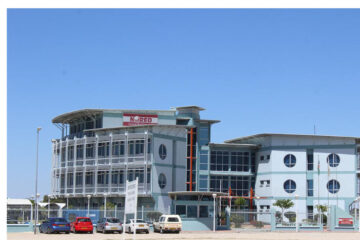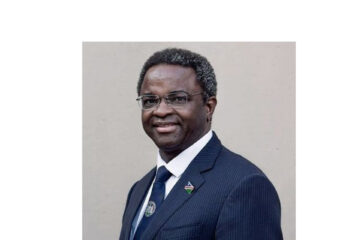Tujoromajo Kasuto
Challenges such as aging fleets, insufficient funding for regional councils and old water infrastructures are hampering service delivery at various community-based conservancies in the country’s north central and north eastern parts.
This is revealed in the National Council Standing Committee on Agriculture, Environment, and Natural Resources report following its oversight visits to the Zambezi, Kavango East,
Kavango West, Ohangwena, Oshikoto, Oshana, Omusati, Kunene, and Erongo Regions on Rural Water Supply, Community Based Conservancies, and Open Mining Pits.
The Standing Committee visited eight regions and found that, despite a number of challenges, the Ministry of Agriculture, Water and Land Reform, through the Directorate of Water Supply and Sanitation Coordination, was doing relatively well in providing potable water to remote areas.
However, the committee expressed concern that more than thirty years after independence, some community members still lacked clean drinking water and relied solely on traditional wells and rain water for both human and livestock consumption.
It was discovered that many people in the Kavango West, specifically Mpungu Constituency, followed by Oshikunde in the Ohangwena Region, still walked long distances to water points for themselves and their livestock.
The committee visited eight Community Based Natural Resources Management Conservancies projects to learn about their management, operations, accomplishments, and challenges.
The committee was astounded by the level of economic activity at the following conservancies: Ehi-Rovipuka in Kunene, Salambala and Mashi in Zambezi, Maurus Nekaro in Kavango West and Okongo conservancy in the Ohangwena.
The same cannot be said for the Omusati region’s Sheya Shuunona, Lipumbu Ya Shilongo, and Uukolonkadhi conservancies.
Joseph Mbambangandu is registered as a community-based conservancy, but no activities are currently taking place and the conservancy has been abandoned.
The Otjindjerese conservancy had not earned any income since it was gazetted and was still waiting for the traditional authority to grant it a leasehold right. Although the conservancy existed on paper, it was still a concept that needed to be fleshed out. The committee noted the negative impact of the Covid -19 pandemic, and the disease did, in fact, contribute significantly to the low level of economic activity experienced by communities that operate conservancies.
The establishment of the Covid -19 Relief Fund by MET came at an opportune time, as most conservancies would have been unable to retain staff or cover basic operational costs for patrols, game counts, responding to Human Wildlife Conflict, and preventing or reporting wildlife crimes.
The committee concludes in their report that the supply of potable water in remote areas is dependent on resources such as cars and personnel.
According to the report, vehicle inadequacy was exacerbated by high salinity levels in regions such as Ohangwena, Oshikoto, Oshana, and Omusati, where residents resorted to drinking dirty water because tankers that supplied water were always in disrepair.
There were differences in the economic benefits derived from conservancies, with those in the Zambezi, Kavango West, and the Ehi-Rovipuka Conservancy in the Kunene doing particularly well.
As a result, the committee recommends that Regional Councils delegated functions of Water Supply and Sanitation Coordination include full resources to support the maintenance of aging water infrastructure. The moratorium on purchasing new vehicles should be lifted, and the old fleet auctioned to fund the purchase of new vehicles, the committee proposes.
It further says that the MAWLR should domesticate the allocation of the operational to regions, taking into account individual needs, topography, and all cases unique to each region.
Lastly, conservancies should be granted more hunting quotas to ensure that set goals are met, and payment for the Human Wildlife Self-Sufficiency Scheme is decentralised.



